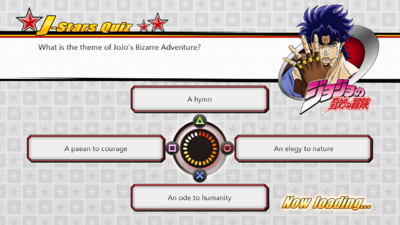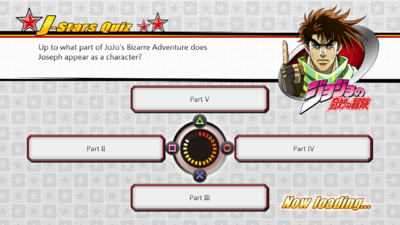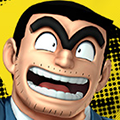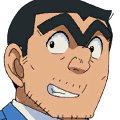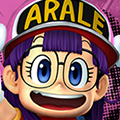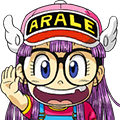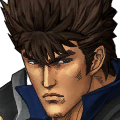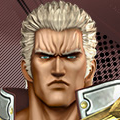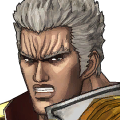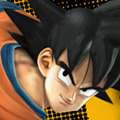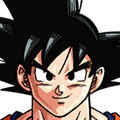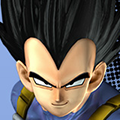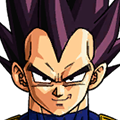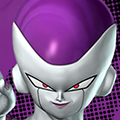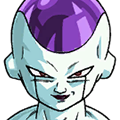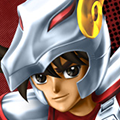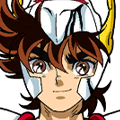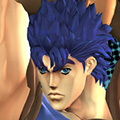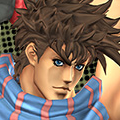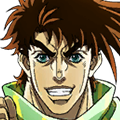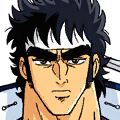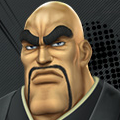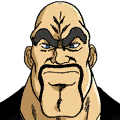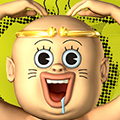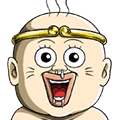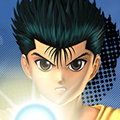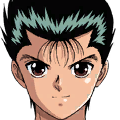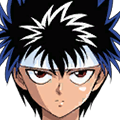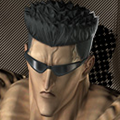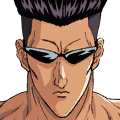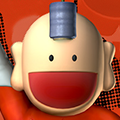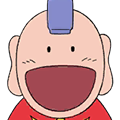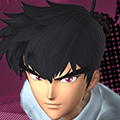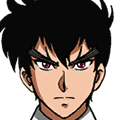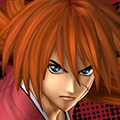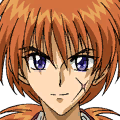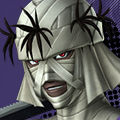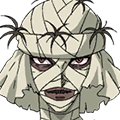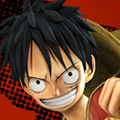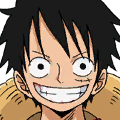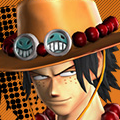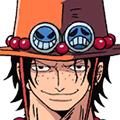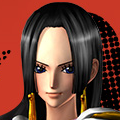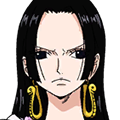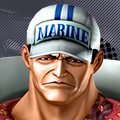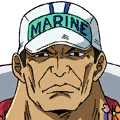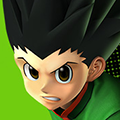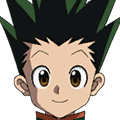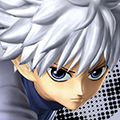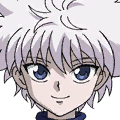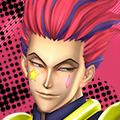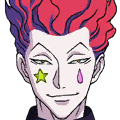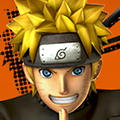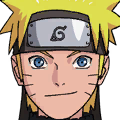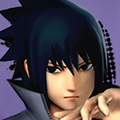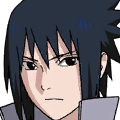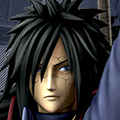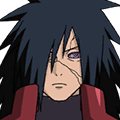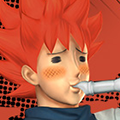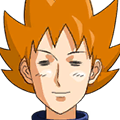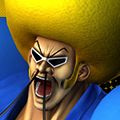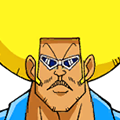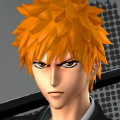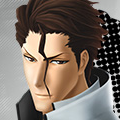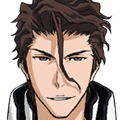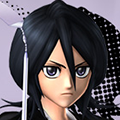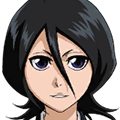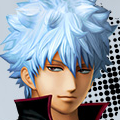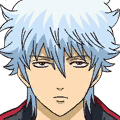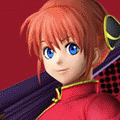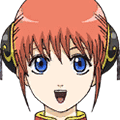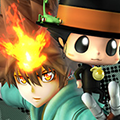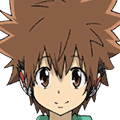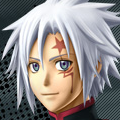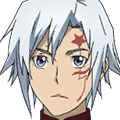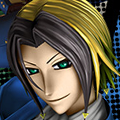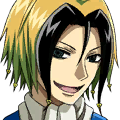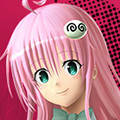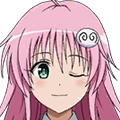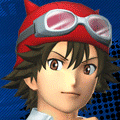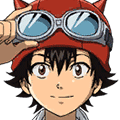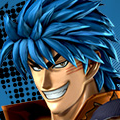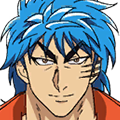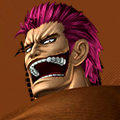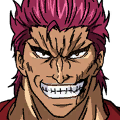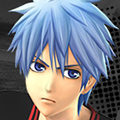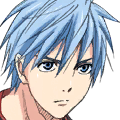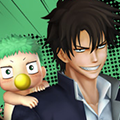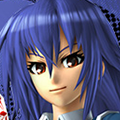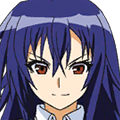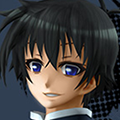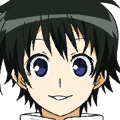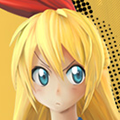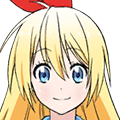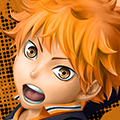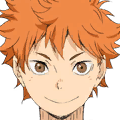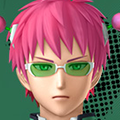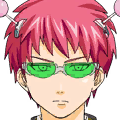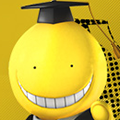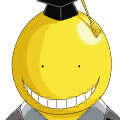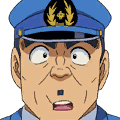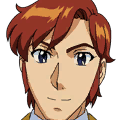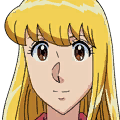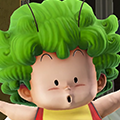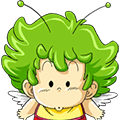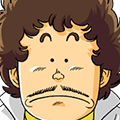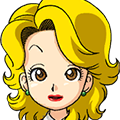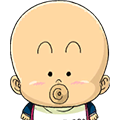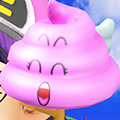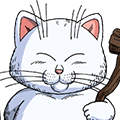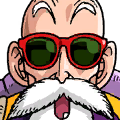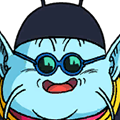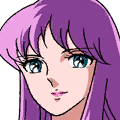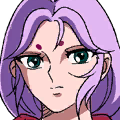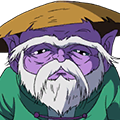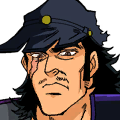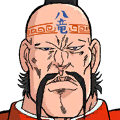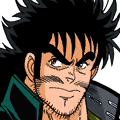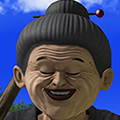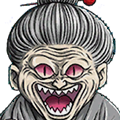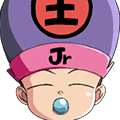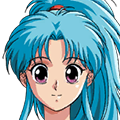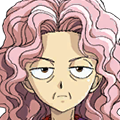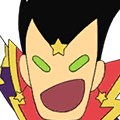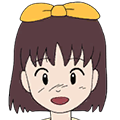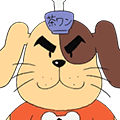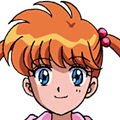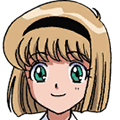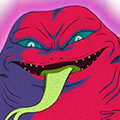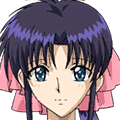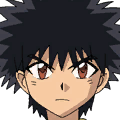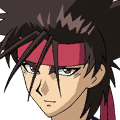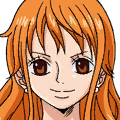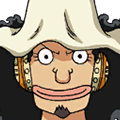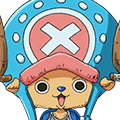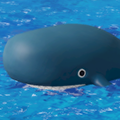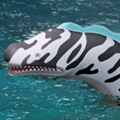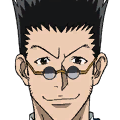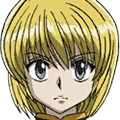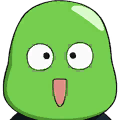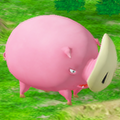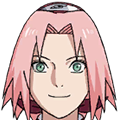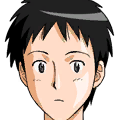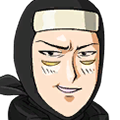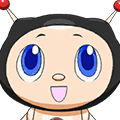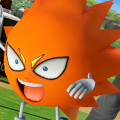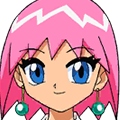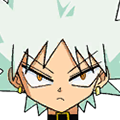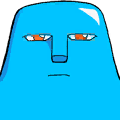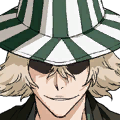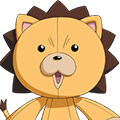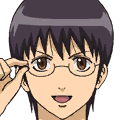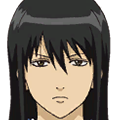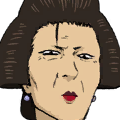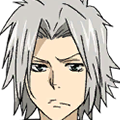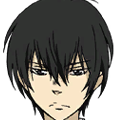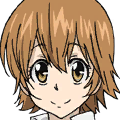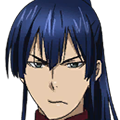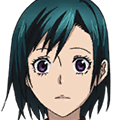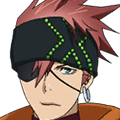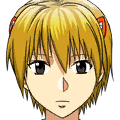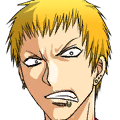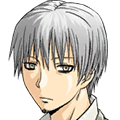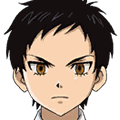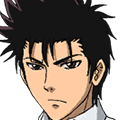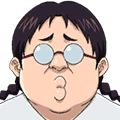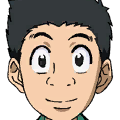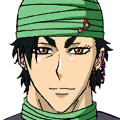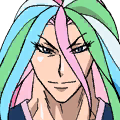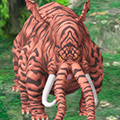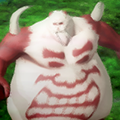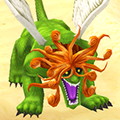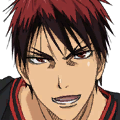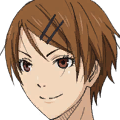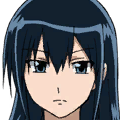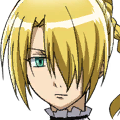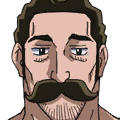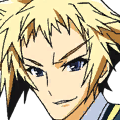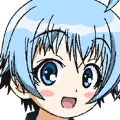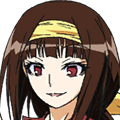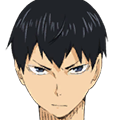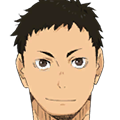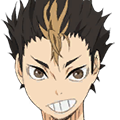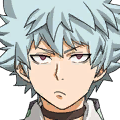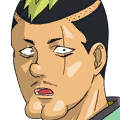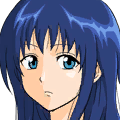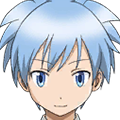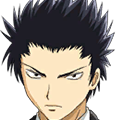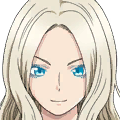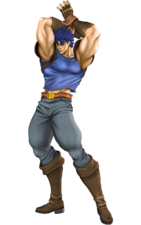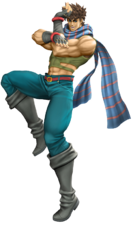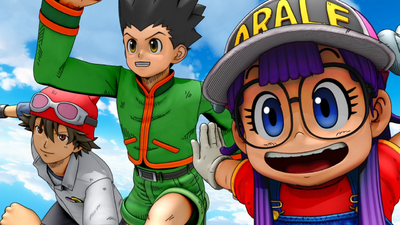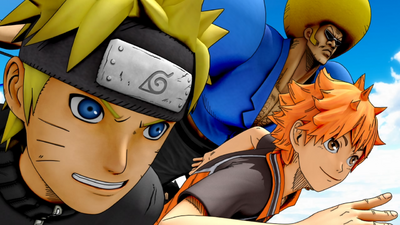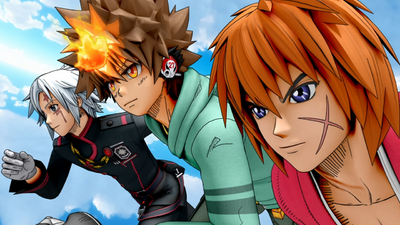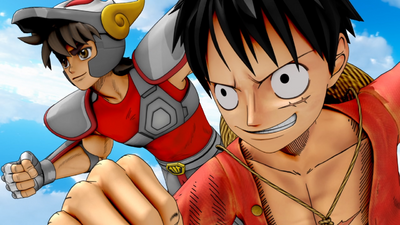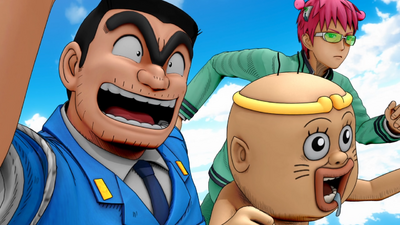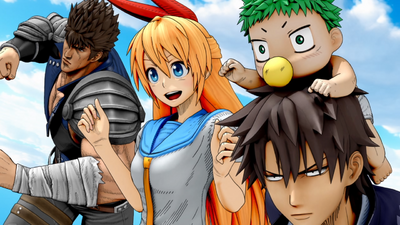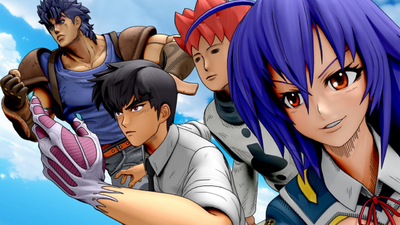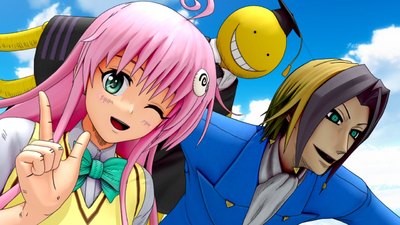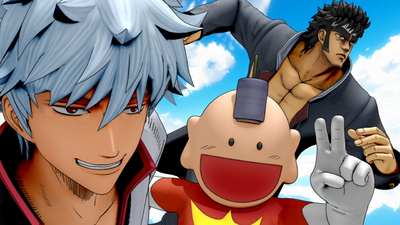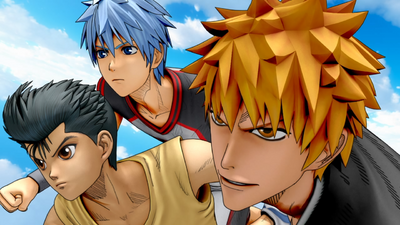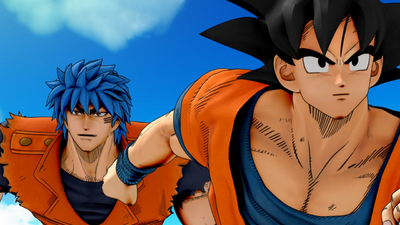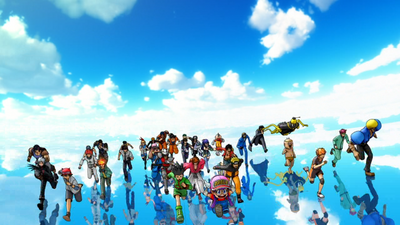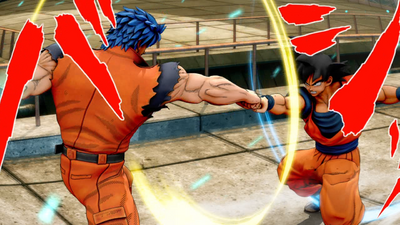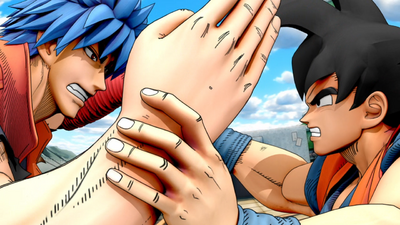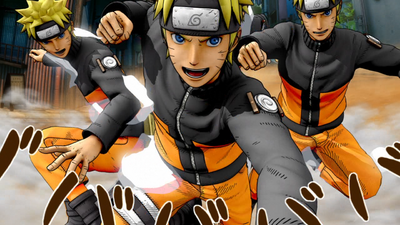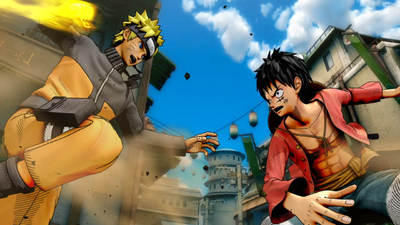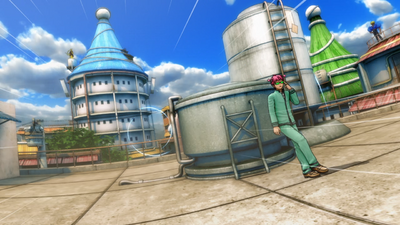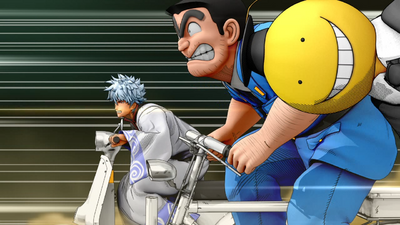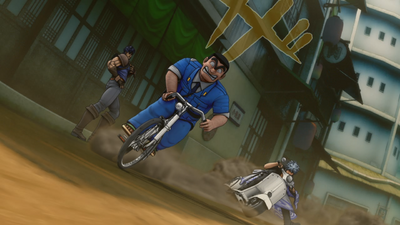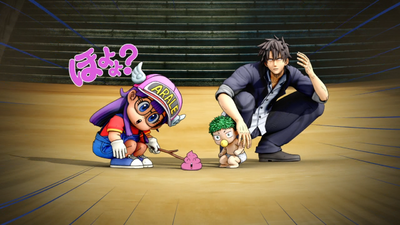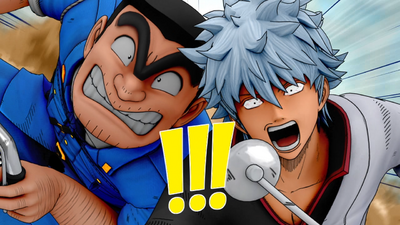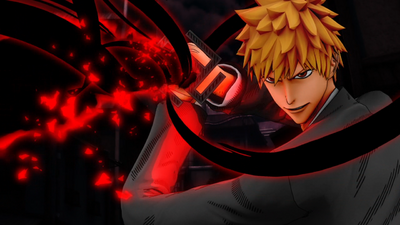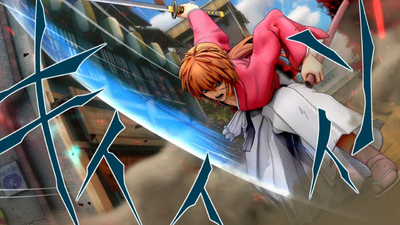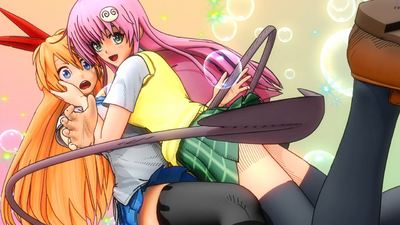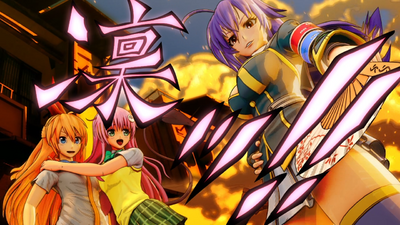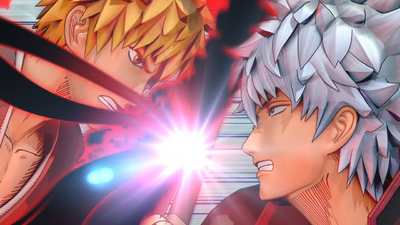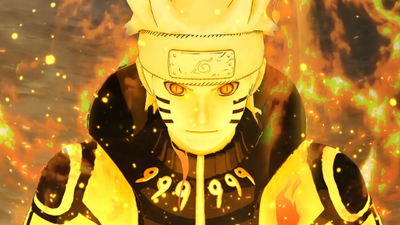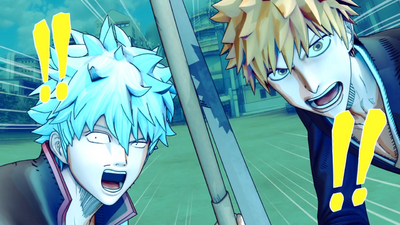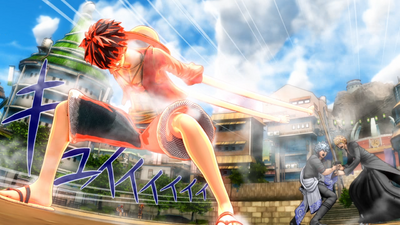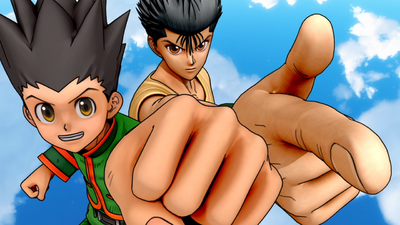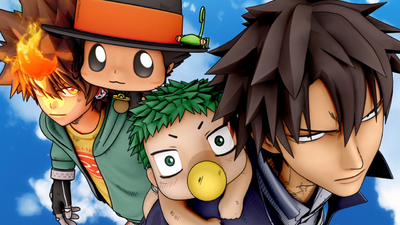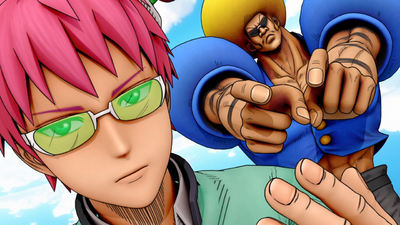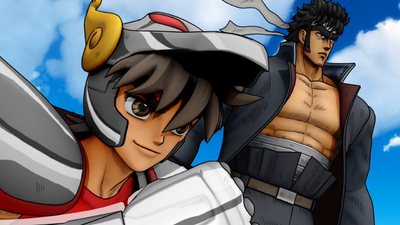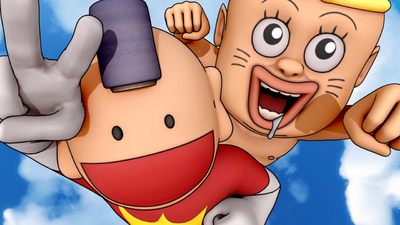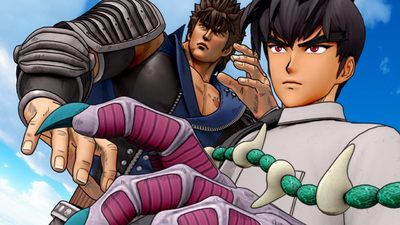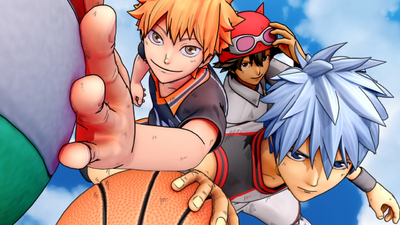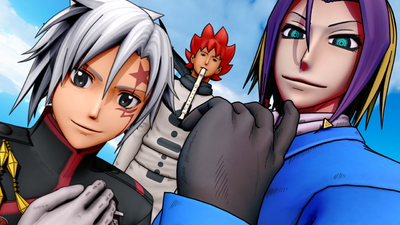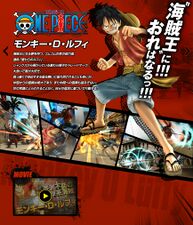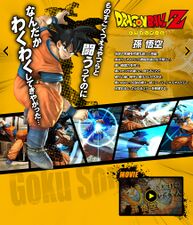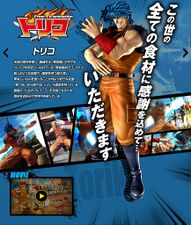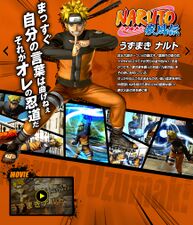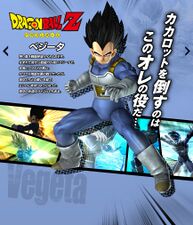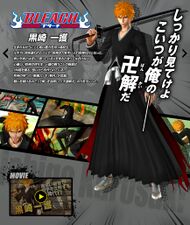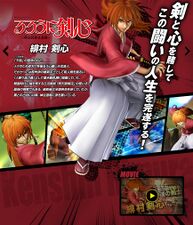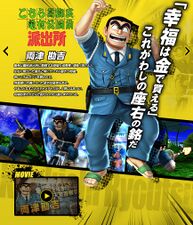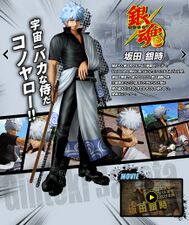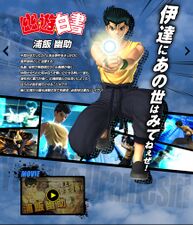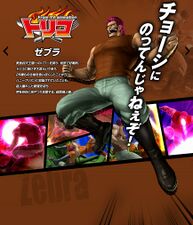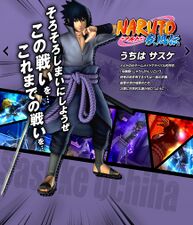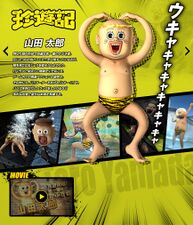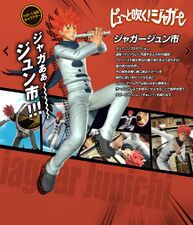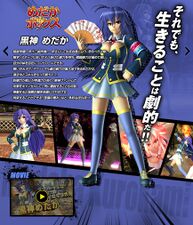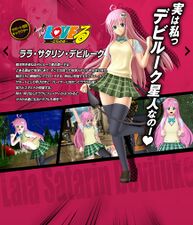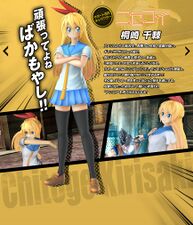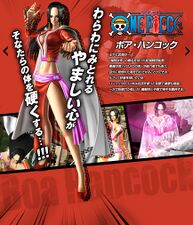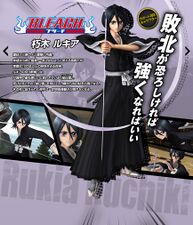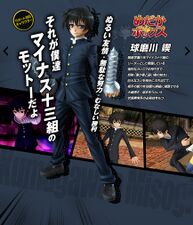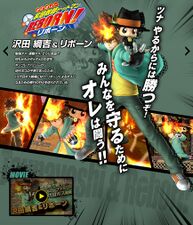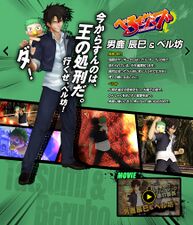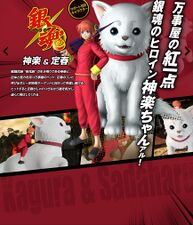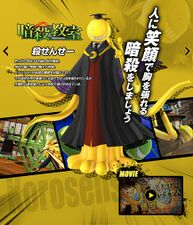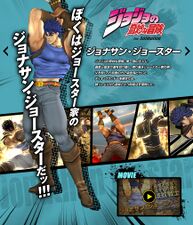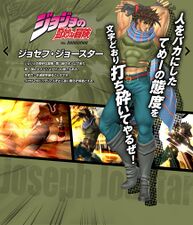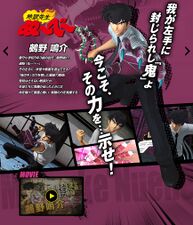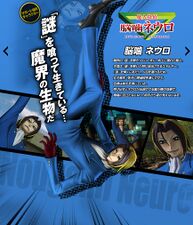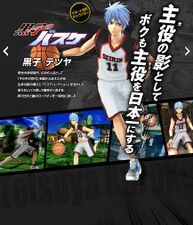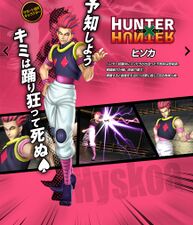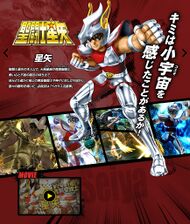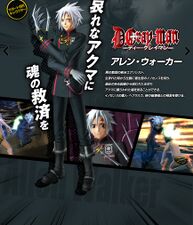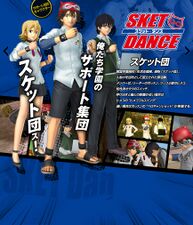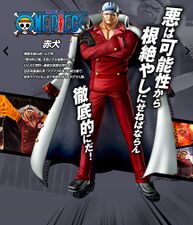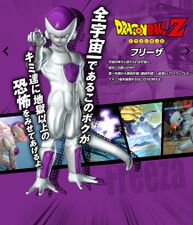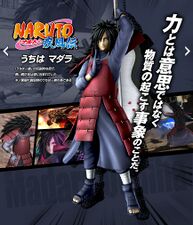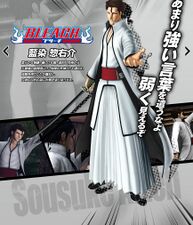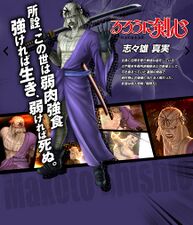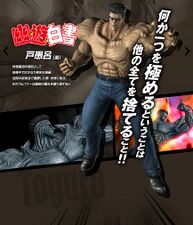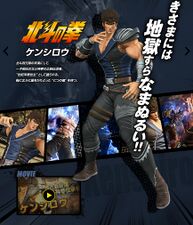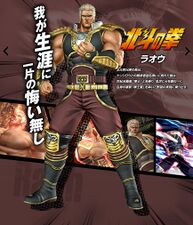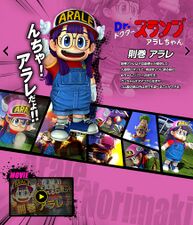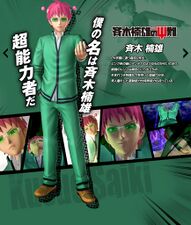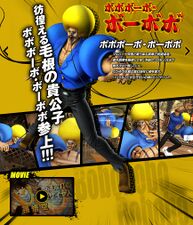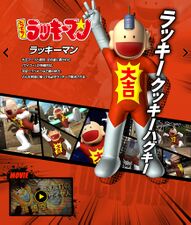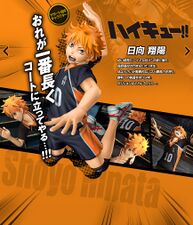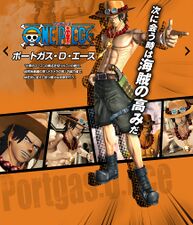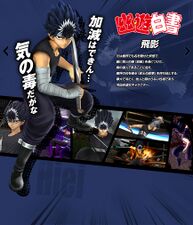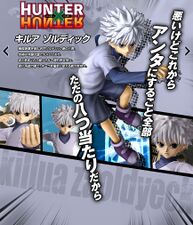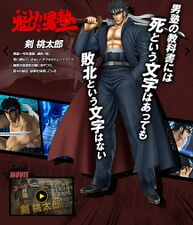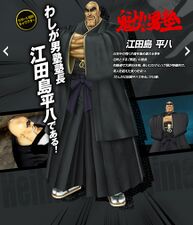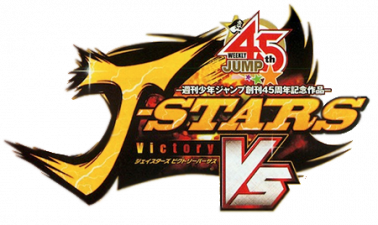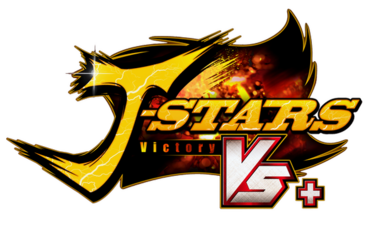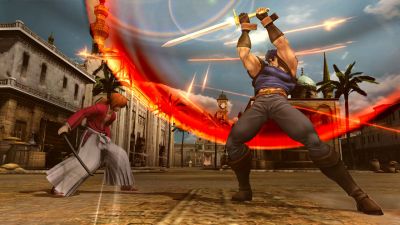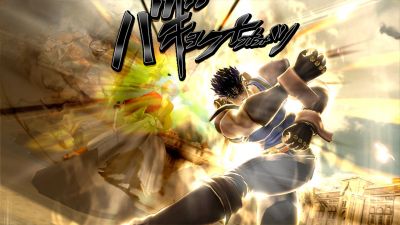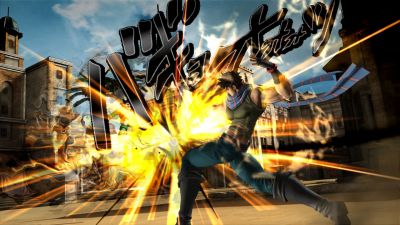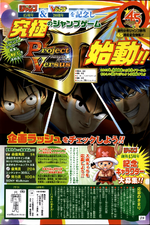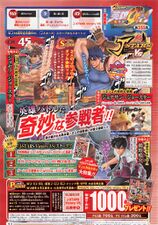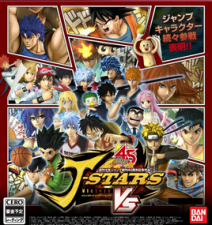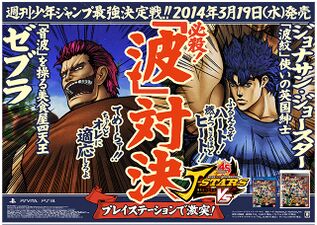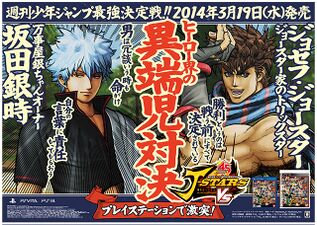J-Stars Victory VS
J-Stars Victory VS (ジェイスターズ ビクトリーバーサス, Jei Sutāzu Bikutorī Bāsasu) is a tag team fighting game featuring characters from 32 franchises of the Weekly Shonen Jump magazine. The game was created to commemorate the 45th anniversary of Shonen Jump and was released for the PlayStation 3 and PlayStation Vita on March 19, 2014.
A limited edition Anison version of the game was also released on the same day, including 21 anime openings from series in the game which players can set as the theme playing during battles.[1]
J-Stars Victory VS was released for western territories as J-Stars Victory VS+ for the PlayStation 4, PlayStation 3, and PlayStation Vita, with an additional Arcade Mode for the international release. It was released in Europe on June 26, 2015 and in North America on June 30, 2015. The new edition also included game balance adjustments based on feedback from Japanese players.[2]
Summary
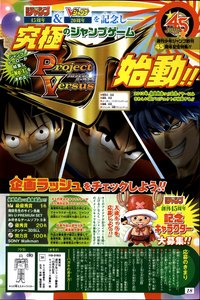
Shueisha and Bandai Namco Entertainment announced the game as Project Versus J in the Weekly Shonen Jump magazine's second issue of 2013, which released on December 10, 2012. Promoted as the "ultimate Jump game", it was announced with Monkey D. Luffy, Son Goku, and Toriko as the first three characters.
Hironobu Kageyama, Akira Kushida, and Hiroshi Kitadani sang the game's theme song "Fighting☆Stars!". Those who pre-ordered the game received the J-Stars Victory Book, a volume bound like a Jump Comics book and filled with information and visuals of Jump heroes over the years. A free augmented-reality (AR) app allowed players to see the Jump heroes in their surroundings on the PS Vita.
The localized version of the game, J-Stars Victory VS+, offered a digital compendium art book and set of PlayStation themes as a pre-order bonus.
Gameplay
J-Stars Victory VS is a team-based, arena-style fighter that lets up to four players battle against each other in large 3D arenas where players can move in all directions and jump on platforms or buildings. The game features stage destruction, allowing the attacks of players to destroy buildings if they are hit.
Basics
The game is primarily either 1 vs. 1 or 2 vs. 2 with an additional slot for optional support characters. Some Story Mode fights also allow 3 vs. 1. The goal of each battle is for a team to fill up all sections of their Victory Gauge at the top of the screen. Normally, there are 3 notches for each team, though some Story Mode fights may have 2 on each side or only one for the player in difficult matches. When a character's health is drained, the opposing team's Victory Gauge will fill up by one notch. If the Victory Gauge is not full, the character re-spawns after a few seconds at a certain spot in the map with invincibility frames for a short time. Battles may also have a timer of 300 seconds if the timer is not set to unlimited. In the event of a time out, the team with more notches filled in their Victory Gauge is the winner. However, if both teams have an equal amount of their Victory Gauge filled, the remaining health of the players determines the outcome.
Fighters can use regular attacks, power attacks, area-based attacks, and finishing moves. Regular attacks are the main part of the battle, and all combos begin with them. Power attacks leave the user open, but they have a big impact if they connect and their power can be increased by charging them up. Area-based attacks allow to hit opponents over a wide area. By using different techniques, the player can lead their team to victory.
Jump's main beliefs and principles of Friendship, Effort, and Triumph play a big role in the game. Each character can be set to one of those types and there are also bonus Friendship, Effort, and Triumph gauges which determine how many characters or items a player can buy in the J-Point shop.
Players may also equip decks with customizable cards they can purchase which each have varying skills to boost their characters' stats and cooldowns.
Victory Burst
In between each Victory Gauge is a Voltage Gauge that determines how close a team is to activating a Victory Burst. The Voltage Gauge is built up as members of a team successfully hit attacks and whenever a Support character is called. When the gauge is fully on one team's side, Victory Burst must be activated by both team members to gain its effects. Once one player presses the button to activate it, a timer depletes until the other player also activates it. Upon entering the Victory Burst state, characters will be granted different bonuses based on their type:
- Friendship - Reduced Stamina spent on actions.
- Effort - Increased defense.
- Triumph - Increased attack.
Moreover, being in the Victory Burst state allows both players to use their Super Special Attack (Ultimate Attack in the localization). While Victory Burst is in effect, the Voltage Gauge will transform into 3 pairs of thunderbolts. The center bolt represents the timer for how long the Victory Burst will remain active. The bolts to the left and right represent 1 stock each of the Ultimate Attack, shared between both members of the team.
Controls
The game uses ten buttons: weak attack, strong attack, special actions, jumping, targeting, guarding, dashing, support, taunt, and Victory Burst/Ultimate Attack. There is a setting in the Game's options mode for "Simple Controls" where combos, guarding, and targeting will be performed automatically. However, this cannot be selected for online battles.
![]() sets the control mode to "Conserve", telling the AI partner to sparingly use their special attacks.
sets the control mode to "Conserve", telling the AI partner to sparingly use their special attacks.
![]() sets the control mode to "Focus", telling the AI partner to attack the same target as the player.
sets the control mode to "Focus", telling the AI partner to attack the same target as the player.
Opening Video
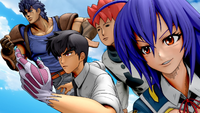
The opening video begins with pages of Weekly Shonen Jump flipping, quickly showing pages of Naruto with shadow clones, Luffy about to punch, and Goku reacting.
It transitions to a shot from behind of all of the protagonists of the series featured in the game running. The camera then switches between slow-motion side shots of various protagonists: Bossun, Gon, and Arale; Naruto, Bobobo, and Hinata; Allen, Tsuna, and Kenshin; Luffy and Seiya; Ryotsu, Taro, and Saiki; Kenshiro, Chitoge, and Oga with Baby Beel on his head; Jonathan, Nube, Jaguar, and Medaka; Lala, Koro-sensei, and Neuro; Gintoki, Luckyman, and Momotaro; Yusuke, Kuroko, and Ichigo. Lastly, it shows Toriko and Goku before zooming out backwards to show a frontward shot of the characters running toward the screen.
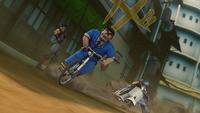
Pages flip again, changing the scene to the Hidden Leaf Village. Goku and Toriko are battling on top of a building. Their fists collide and Goku blocks Toriko's "Fork" and "Knife" attacks. Naruto creates shadow clones to hit Luffy away, though Luffy blocks it and dodges his follow-up to land a counter. However, Naruto manages to kick him away. Naruto then appears behind Goku and Toriko, using Rasengan on them. As it's about to hit Goku's back, Luffy comes running and stretches his fist to intercept the blow. Meanwhile, Saiki lifts his glasses in the background, while Bobobo and Koro-sensei are atop other buildings. Gintoki and Ryotsu race through the streets on their scooter and bicycle. Koro-sensei flies past them, and the two swerve past Jonathan who is standing by a store.
Arale is poking Poop-Boy with a stick while Baby Beel watches with Oga crouching by him. Suddenly, Gintoki and Ryotsu nearly crash into them but manage to evade them causing them to ride up stairs and fly across a building.

Meanwhile, Ichigo is fighting Kenshin in a sword battle. Ichigo uses Getsuga Tensho but Kenshin blows it away. Medaka pushes Lala toward Chitoge and the two hug while an explosion occurs in the background. Ichigo jumps toward Ryotsu, who grabs his arm and throws him toward Gintoki, but Gintoki parries his attack with his sword. Naruto transforms into his Nine-Tails Chakra Mode while Goku transforms into Super Saiyan and fires a Kamehameha. Naruto then creates two shadow clones and jumps to dodge it, causing the Kamehameha to head toward Gintoki and Ichigo. Luffy then transforms into Gear 2nd and jumps in front of them, countering the Kamehameha with his Gum Gum Jet Bazooka, making a large explosion in front of him.
Finally, the pages flip again to show characters doing various poses. Yusuke is with Gon; Oga and Baby Beel are with Tsuna and Reborn; Bobobo is with Saiki; Seiya is with Momotaro; Taro is with Luckyman; Kenshiro is with Nube; Hinata is with Bossun and Kuroko; and Allen is with Jaguar and Neuro. It ends with a flash to the logo.
Anison Edition
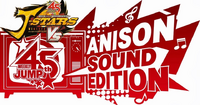
The songs included in the Anison edition are the following:
- "We Are!" (One Piece)
- "GO!!!" (Naruto: Shippuden)
- "CHA-LA HEAD-CHA-LA" (Dragon Ball Z)
- "Smile Bomb" (Yu Yu Hakusho)
- "Guts Guts!!" (Toriko)
- "*~asterisk~" (Bleach)
- "departure!" (Hunter × Hunter)
- "JoJo ~Sono Chi no Sadame~" (JoJo's Bizarre Adventure)
- "Sobakasu" (Rurouni Kenshin)
- "Pegasus Fantasy" (Saint Seiya)
- "Ai wo Torimodose!!" (Fist of the North Star)
- "Dadada" (Beelzebub)
- "Pray" (Gintama)
- "HAPPY CRAZY BOX" (Medaka Box)
- "Katsushika Rhapsody" (Kochikame)
- "Waiwai World" (Dr. Slump)
- "Yogorecchimatta Kanashimi Ni..." (Sakigake!! Otokojuku)
- "Luckyman Song" (Tottemo! Luckyman)
- "Bari Bari Saikyou No. 1" (Hell Teacher Nube)
- "LISTEN TO THE STEREO!!" (Reborn!)
Game Modes
J-Adventure
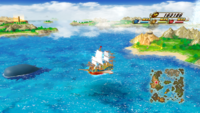
The story mode of J-Stars Victory VS is split into four different modes: Dynamic Arc, Hope Arc, Investigation Arc, and Pursuit Arc. The Dynamic Arc primarily focuses on Monkey D. Luffy, Portgas D. Ace, and Pegasus Seiya. The Hope Arc focuses on Naruto Uzumaki, Yusuke Urameshi, and Gon Freecss. The Investigation Arc focuses on Toriko, Zebra, and Son Goku. The Pursuit Arc focuses on Ichigo Kurosaki, Tatsumi Oga, and Hiei.
Each arc is mostly similar to each other aside from the character interactions. Some arcs may also show additional details of what characters were doing or how they encountered each other which the other arcs do not show.
Throughout their journey, players may encounter areas called "Shrine of Space and Time", allowing them to play scenes from the perspective of other characters who aren't in the main party, such as Gintoki, Bobobo, or the villains.
Overall Plot
The story involves a "Mysterious Voice", proclaiming itself as the "God of the Jump World", inviting the protagonists of each arc to take part in the "Jump Battle Tournament". The player starts off with one character in a small boat and can travel around the map recruiting allies, taking on side quests, and progressing the story through main quests. After arriving at Korin's Tower to register for the tournament, the player is rewarded with a Jump Ship. The ship requires multiple upgrades in order to travel to various spots throughout the world, such as requiring a Sail of Charity to reach other islands, Propeller Feathers to break through cyclones, a Cannon to break boulders and shoot monsters, a Dragonbone Hull to fly over tall mountains, a Passion Jewel to fly over magma, a Ninja Prow to cleave through glaciers, a Destiny Blimp to reach sky islands, and a Dream Compass to access the Darker Reaches in outer space.
In order to take part in the tournament, players must collect three Hero Emblem Fragment pieces which combine into one, which they may receive while fighting certain examiners.
After battling in the tournament, the God of the Jump World reveals that their true reason for gathering the heroes together was to save the world against a threat known as the "Dark Phantoms". The Dark Phantoms are wicked beings from the Darker Reaches who were sealed long ago at a terrible cost, but the seals have since lost their power. However, in order to access the Darker Reaches, the heroes must gather three keys that were once used to seal them: the keys of Friendship, Triumph, and Effort. Players must travel to each island to discover clues of where the keys are and eventually retrieve them after defeating villains. Once the heroes arrive at the Darker Reaches, the Dark Phantoms transform into each character in the main trio of the arc. Once they're defeated, the protagonists convince them to change their ways, saving them from the darkness. The God of the Jump World wants to grant the heroes a wish, but none of them want any wishes to be granted. Instead, the God of the Jump World rains down food on them so they can have a feast.
Arc Summaries
Victory Road
Victory Road is a mode where players can select their team and fight through a variety of predetermined battles to conquer an area. As the player progresses through each area, the difficulty of the battles increase. Some battles may have optional challenges which reward the player with J-Points for achieving them. Characters can be changed at any time.
Arcade
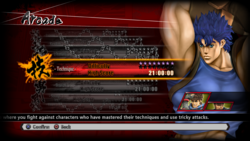
Arcade is only available in J-Stars Victory VS+. Players can select a difficulty level and fight through six battles. There are eight different arcade courses a player can choose. Initially, only the "Technique", "Brave", and "Strong" courses are unlocked.
- Technique (Difficulty: 8★): This is a course where players can fight against characters who have mastered their techniques and use tricky attacks.
- Brave (Difficulty: 9★): This is a course where players can fight against characters who can take flexible approaches to battle in any given situation.
- Strong (Difficulty: 10★): This is a course where players can fight against characters who are known for their great power and physique.
- Elite (Difficulty: 12★): This is a course where players can fight against characters who appeared around 2010. Unlocked by clearing all three initial courses.
- Master (Difficulty: 13★): This is a course where players can fight against characters who appeared around 2000. Unlocked by clearing all three initial courses.
- Extreme (Difficulty: 14★): This is a course where players can fight against characters who appeared during the 1980s and 1990s. Unlocked by clearing all three initial courses.
- Random (Difficulty: 8★): This is a course where players can fight against random characters. Unlocked by clearing any course.
- Ultimate (Difficulty: 16★): This is a course where players can only fight the best of the best. Unlocked by clearing all courses within a certain time. When certain conditions are met, special "WARNING" battles can be initiated. Winning these allows the player to earn time bonuses to shorten the time of the next battle.
Versus
The Free Battle mode allows players to either fight against the computer or another player in offline 1 vs. 1 or 2 vs. 2 matches, optionally including a support character as well. Online Battle mode allows players to fight against each other but it is limited to 2 vs 2 only, with or without a support character. Players can either have another player as their partner or the computer.
J-Customize
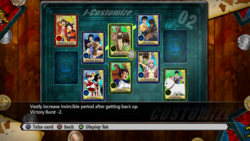
Players can see a list of their J-Stars cards here or create up to five decks with cards. 10 cards can be equipped per deck, though two of the slots are limited to cards consisting of the characters in each main trio team from J-Adventure mode: Luffy, Ace, Seiya, Naruto, Yusuke, Gon, Toriko, Zebra, Goku, Ichigo, Oga, and Hiei.
Aside from the J-Adventure cards, all cards have both a positive effect and negative effect. However, there are 26 different groups which cards can belong to. If three cards of a certain group are lined up in a deck, players will get a "Combination Bonus", meaning that all of the negative effects are cancelled out.
J-Point Shop
Players can use the J-Points (JP) they earned to purchase various things, such as Battle Characters, Support Characters, J-Adventure and J-Customize items, and J-Stars cards. More characters will be available for purchase when the player increases their friendship gauge. More J-Adventure and J-Customize items are available to purchase when the player increases their victory and effort gauges.
J-Stars cards are bought using special Bronze, Silver, or Gold coins, which can be purchased in the shop.
Gallery
In the Gallery Mode, players can view character profiles, models, and voices. It also displays a list of all of their interactions with other characters in the game, depending on which ones the player has seen already. There is also an option to view or delete saved battle replay data.
Options
The Options Mode allows players to change battle control settings, display settings, and sound settings. There is a BGM editor allowing players to replace a song in the game with a song stored on their PlayStation's HDD, though these replaced songs cannot be played online. Lastly, there is a Cross-Save option to upload or download game progress data to or from PSN, allowing users to play the game on other consoles they may own. However, online battle records cannot be uploaded.
J-Stars Quiz
The loading screens may randomly show a quiz minigame called "J-Stars Quiz". These quizzes display a specific trivia question based on each series in the game. Players must quickly press one of the four buttons shown on the screen to answer the question. If answered correctly, the player receives extra J-Points.
-
A: An ode to humanity
-
A: Part IV
Characters
There are 39 playable characters in the game. Only Luffy, Toriko, Naruto, Gintoki, Goku, and Ichigo are available at the start. The rest of the characters must be unlocked through the Story Mode or purchased in the Store using the in-game currency.
Additionally, there are 13 different characters who are only available as support. These characters appear on the screen and perform an action such as an attack or recovering the player's health before disappearing. None of the support characters are available at first. They all need to be unlocked in Story Mode or purchased with the in-game currency in the Store. All of the playable characters can be used as support as well.
Miscellaneous
All the characters who make a cameo appearance either in Story Mode or as part of some character's moveset.
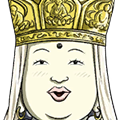
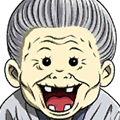
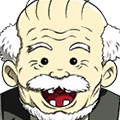
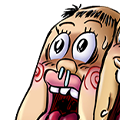
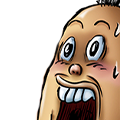

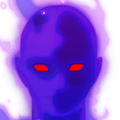
Unused Content
Incomplete data for Jotaro Kujo, DIO, Dai from Dragon Quest: The Adventure of Dai, and Yoh Asakura from Shaman King are within the game files, suggesting that they were going to be included before being scrapped during development. Jotaro, DIO, and Dai were going to be playable, whereas Yoh was going to be a support character. Jotaro and Star Platinum's animations and a partial moveset is also included.
Jotaro, DIO, and Dai would later become playable in Jump Force, with Jonathan and Joseph being absent.
Battle Stages
- Alabasta (One Piece)
- Namek (Dragon Ball Z)
- Konohagakure (Naruto)
- Vegetable Sky (Toriko)
- Dark Tournament Stadium (Yu Yu Hakusho)
- Soul Society (Bleach)
- Hall of the Flaming Hell (Rurouni Kenshin)
- Katsushika City (Kochikame)
- Yoshiwara Paradise (Gintama)
- Athena's Temple (Saint Seiya)
- Penguin Village (Dr.Slump)
Reception
The Japanese magazine Famitsu gave the game 32/40, with all four reviewers giving the game 8/10.
Trailers
Gallery
Trivia
- Despite not having any specific interaction between each other, Jonathan and Joseph have certain dialogue said depending on the opposing character:
- Jonathan to Lala: "Heh heh... You don't need to say a word. Girls are just so cute...".
- Jonathan to Bobobo: "Forever descend into the darkness of history!!".
- Joseph to Taro Yamada: "You do say some interesting things... Come over here so I can beat you up!".
- Joseph to Kirisaki Chitoge: "Are you ignoring me, that kinda pissed me off... Ok, let's get a more extreme response from you shall we...".
- Joseph to Boa Hancock: "That...that woman's eyes... It's similar to a pig farms eyes...so cold...so cruel...".
- Joseph to Akainu: "Huh? Are you talking to me? Who the hell are you? Exactly what are you talking about? Is something wrong with your head?".
- In the game's third trailer, both Jonathan and Joseph appear as the rivals of Gintoki Sakata (from the GINTAMA franchise). With their battle named "Kettou vs Amatou" (Kettou meaning "family lineage" and Amatou meaning "a person who loves candy").
- The trailer jokes about Joseph and Gintoki sharing the same voice actor, Tomokazu Sugita, where Joseph says "Your next line's gonna be: Hey, where do I know you?" and Gintoki replies "Hey, where do I know you...WHAAAT?".
- Also in the eighth trailer, Gintoki returns Joseph's trick by saying "Joseph...your next line's gonna be: My... special trick..." and Joseph replies "My... special trick...!!"
- In the game's eighth trailer, several characters have special interactions with each other. During Jonathan's part he says "Let the darkness of history sink to the depths!!" and Bobobo (from Bobobo-bo Bo-bobo) replies "The history of the afro will always sink!". Their interaction is likely due to Dio and Bobobo sharing the same voice actor, Takehito Koyasu.
- Unlike some other characters in the game, both Jonathan and Joseph's attacks heavily feature Japanese sound effects commonly seen in manga. This was presumably done to capture the series' unique use of onomatopoeia and match the style of the anime.
- Both Jonathan and Joseph are the only playable characters from the same franchise to appear on the game's cover.
- The appearance of some characters are taken from their most popular sagas instead of their current or latest ones at the time the game was launched. For example, this includes Seiya (from Sanctuary Saga), Yusuke (from Dark Tournament Saga), Ichigo and Rukia (from Aizen Saga), and Goku and Vegeta (from Cell Saga). Some others are taken from the current anime saga at the moment instead of the current manga saga. This includes Joseph Joestar (from Battle Tendency), Toriko and Zebra (from Four Beast Saga), Gon and Killua (from the Chimera Ant Saga), and Naruto, Sasuke, and Madara (from Ten-Tails Saga).
References
- ↑ Official Website - Special (Archived)
- ↑ "Fighting Game J-Stars Victory VS+ is a Fun Eye-Candy Filled Fan Service", IGN, December 23, 2014.
